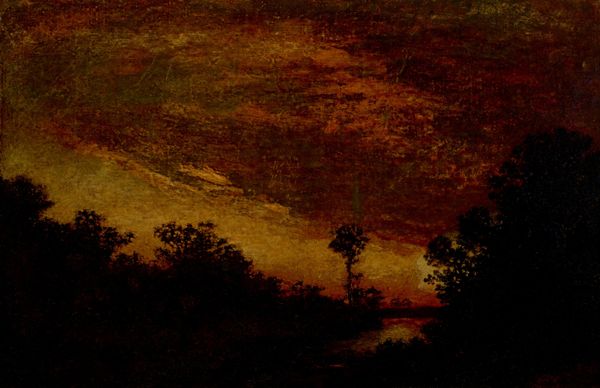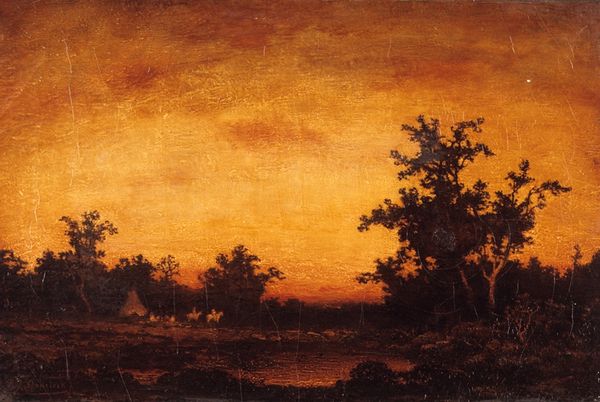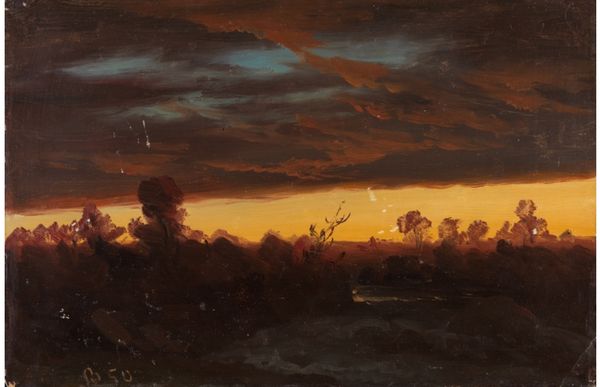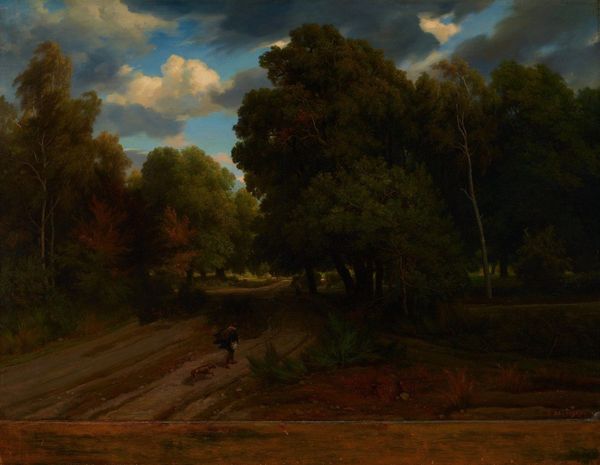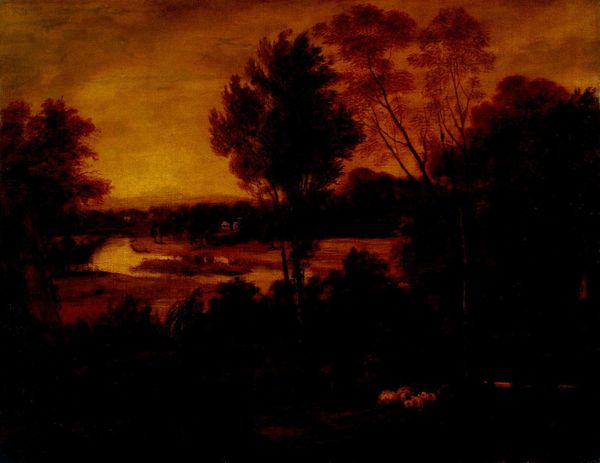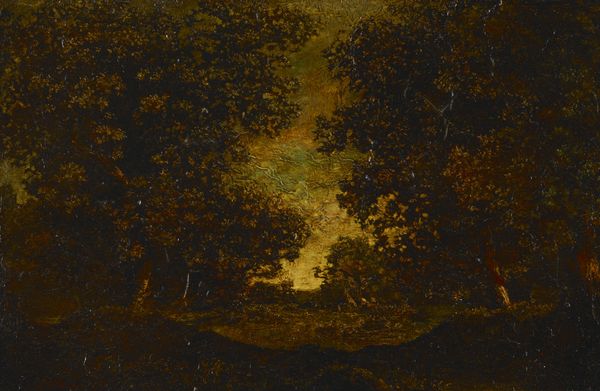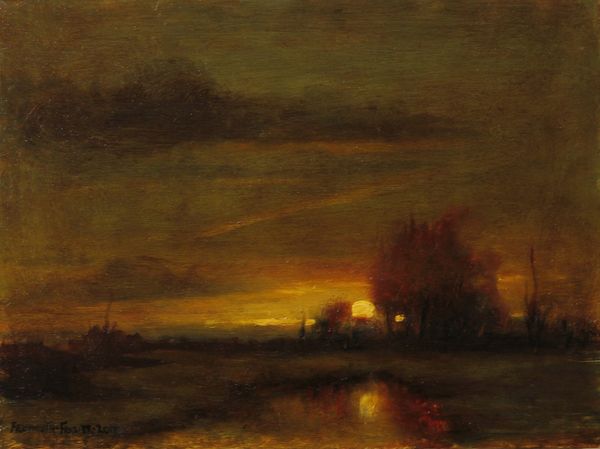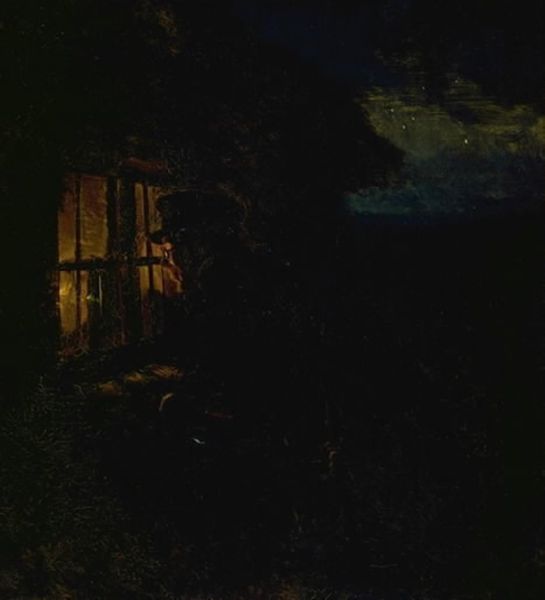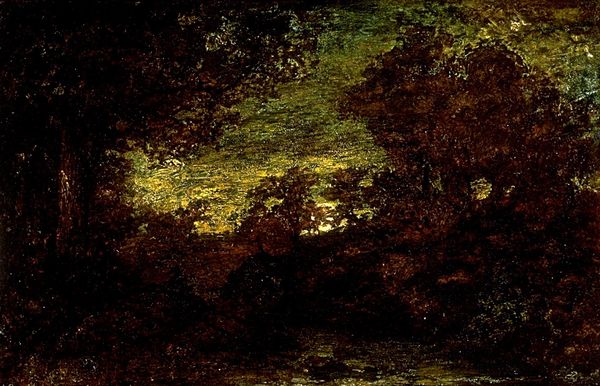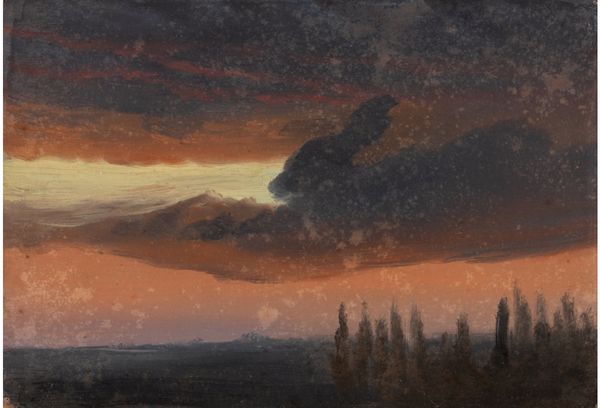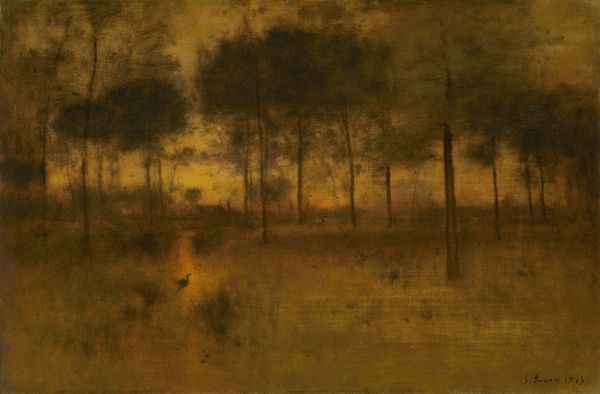
Dimensions: support: 1073 x 1524 mm
Copyright: CC-BY-NC-ND 4.0 DEED, Photo: Tate
Curator: Francis Danby, who lived from 1793 to 1861, painted this intriguing scene called *The Wood Nymph's Hymn to the Rising Sun*. Editor: My first impression is drama; the composition is striking, very dark foreground against that fiery sky. Curator: Yes, the juxtaposition is intentional. Danby employs a chiaroscuro effect; his rendering of light and shadow creates depth and focuses the eye. Editor: The rising sun is an enduring symbol, linked to rebirth and renewal across cultures. One sees it in Ancient Egyptian and Greek mythology. Curator: Indeed. The formal use of a very limited color palette—predominantly blacks, reds, and yellows—serves to intensify the emotional impact. Editor: It evokes a powerful sense of the sublime, doesn't it? The vulnerability and the majesty of nature… Curator: I agree. Danby's manipulation of pictorial space and light invites the viewer to reflect on nature. Editor: Considering the title, the sun isn't merely rising; it's being honored. A narrative of reverence and the cyclical nature of time. Curator: Yes, the composition and tonality create both depth and a sense of being on the cusp of a new day.
Comments
tate 8 months ago
⋮
http://www.tate.org.uk/art/artworks/danby-the-wood-nymphs-hymn-to-the-rising-sun-t01132
Join the conversation
Join millions of artists and users on Artera today and experience the ultimate creative platform.
tate 8 months ago
⋮
Danby, Irish by origin, worked in Bristol and London and later on the Continent. Of all British landscape painters he seems closest to continental artists in his technical approach, though his subject-matter is varied and unpredictable. This highly poetic work is a romantic restatement of the Claudean idyll, making use of richer tonal contrasts and evoking a mysterious fantasy landscape. But the balanced asymmetry in the formal opposition of cliffs and trees acknowledges the artist's roots in the classical tradition. Gallery label, August 2004
